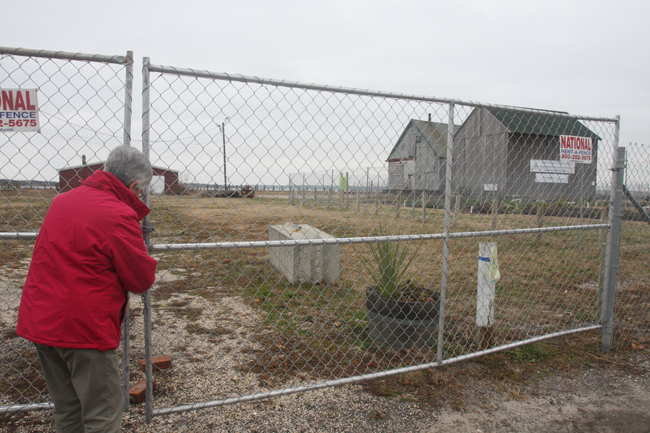A look back at the Galley Ho’s remarkable history

DEVELOPMENT PLANS
In 1985, New Suffolk caught the attention of developer Richard Carr, owner of Shamrock Properties in New York City, who purchased the 3.4-acre waterfront property. He then caused a stir by proposing a complex that would include condominiums, a restaurant, retail shops and a 137-slip marina. The idea met with heavy opposition from the community, namely the New Suffolk Civic Association, who wanted the land to remain undeveloped.
Mr. Blaikie continued to operate the Galley Ho after Mr. Carr bought the property, but closed the restaurant with little warning in 1988. In a Suffolk Times article published Feb. 18, 1988, he offered no explanation for his decision, although it was speculated that it was linked to Mr. Carr’s plan to overhaul the property.
In the article, Mr. Carr said he planned to reopen the restaurant under the same name, but Ms. Ostroski said the businesses that later occupied the space were neither successful nor long-standing. The Galley Ho name, however, endured.
By 1994, a Connecticut bank foreclosed on the property and Mr. Carr’s plans were abandoned. In April 1994, according to a previous Suffolk Times article, it was sold at auction for $800,000 to Love Lane Acquisitions, headed by former Southold Town Planning Board chairman Henry Raynor.
Through the end of the 1990s, Love Lane Acquisitions attempted to construct more boat slips. But again, development plans encountered resistance from the community.
In March 2002, Dan Giannini and chef Jeff Baruch leased the building and opened Harpoon Harry’s at the former Galley Ho.
By 2003, however, they got into a dispute with Love Lane Acquisitions. Harpoon Harry’s later closed and the building has been vacant ever since.
PRESERVATION EFFORTS
Determined not to see the waterfront threatened by large-scale development such as proposed by Mr. Carr or Love Lane Acquisitions, members of the New Suffolk Civic Association resolved in 2005 to purchase the property. To jump-start that effort, they established a nonprofit organization, the New Suffolk Waterfront Fund Inc., said current fund chairman Pat McIntyre.
Lacking its own financial means, the waterfront fund teamed up with the Peconic Land Trust and a “bargain sale” was negotiated with Love Lane Acquisitions. The Land Trust bought the property for $2.4 million in 2007. Three years later, as planned, the waterfront fund purchased the property from the Trust, with the help of a $1.5 million loan from The Conservation Fund, a national preservation group, and donations from more than 500 individual donors.
In 2012, as part of a deal to pay off its $1.5 million mortgage, the waterfront fund agreed to sell the southernmost acre of the property to billionaire Louis Moore Bacon, owner of Robins Island. It also received a $400,000 grant from the state parks department, according to a June 2012 Suffolk Times article.
Conservation easements on the Bacon parcel guarantee its protection from development moving forward. The remaining 2.4 acres are under the waterfront fund’s control and, in addition to the Galley Ho building, contain a historic barn, a community garden and a portion of the beach on the south side of the site.
A NEW GALLEY HO
With its goal of conservation met, the waterfront fund embarked on its next challenge: restoring the Galley Ho building.
Renovation plans stalled in October 2012, however, when flooding caused by Superstorm Sandy badly damaged the building’s foundation. The fund also had to reconstruct the eastern and northern edges of the property’s bulkheading due to the storm. It then drew up plans to relocate the structure before renovating it.
The plan is to reopen the Galley Ho, which would total 1,725 square feet after a small addition, as a restaurant with up to 66 seats. The building, which currently stands on cribbing roughly 120 feet from the water, will also be moved farther from the shoreline, ultimately resting roughly 75 feet from the water’s edge.
Not everyone in the community, however, has embraced this plan. Frequent concerns have been raised by business owners, civic association members and Planning Board officials since the project was first discussed publicly in May.
After some tweaks, the Planning Board approved the waterfront fund’s proposal in November.
Despite the controversy, Ms. McIntyre said the hope is to pour a foundation for the improved Galley Ho as soon as possible.
“We can’t wait to get started,” she said. “We are hoping to begin by the end of the year.”







